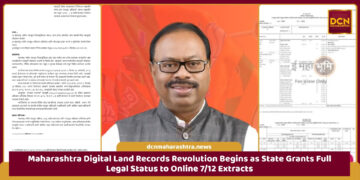Special Correspondent
Mumbai : In a major step toward holding long-pending municipal elections in Maharashtra, the state government on Monday issued a formal directive to initiate ward delimitation based on a four-member system for all A, B, and C class municipal corporations. The directive, issued by the Revenue and Urban Development Department, applies to key corporations such as Mumbai, Pune, Nagpur, Nashik, Thane, Pimpri-Chinchwad, Navi Mumbai, Kalyan-Dombivli, Vasai-Virar, and Chhatrapati Sambhajinagar, signaling the start of the much-awaited civic poll process.
The new order is based on the powers granted under Section 5 of the Maharashtra Municipal Corporations Act, 1949, and incorporates amendments brought in through Acts of 2022 and 2024, which provide for a minimum of three and a maximum of five corporators per ward. It aligns with the Supreme Court’s May 6, 2025 order, directing the state to conduct local body elections without delay.
Four-Member Ward System: Each electoral ward will now elect up to four corporators, replacing previous systems that varied across corporations.
Delimitation to Begin Immediately: Municipal Commissioners of the respective corporations are tasked with preparing draft ward maps, ensuring population balance, geographic continuity, and SC/ST reservation compliance.
Multi-Stage Election Process: The election will proceed in three phases—ward delimitation, reservation and voter list demarcation, followed by the actual polling.
Strict Confidentiality: The government has imposed a gag on information sharing about the ward boundaries until draft maps are officially published. Media, political parties, and other stakeholders are barred from premature access.
Objection & Hearing Mechanism: Citizens will be invited to file objections and suggestions once the draft ward maps are notified. Hearings will be conducted locally by state-appointed officials.
Digital Mapping & Transparency: All ward boundaries will be digitized using Google Earth KML/KMZ files. Public access will be ensured through PDFs and maps published on municipal websites.
Municipal Commissioners will prepare and submit the draft delimitation proposal to the State Election Commission (SEC).
After SEC approval, the draft will be published for public scrutiny.
Post public hearing, a final ward structure will be prepared and notified in the State Gazette.
Final maps will be made accessible at all municipal and ward offices and through official portals.
District Collectors and Municipal Commissioners have been directed to ensure that the process remains free, fair, and transparent—akin to Lok Sabha and Vidhan Sabha elections. The directive also prohibits any administrative alterations—such as changes to municipal boundaries—within six months of the election deadline.
This move comes after prolonged delays in municipal elections due to legal disputes over OBC reservations and delimitation procedures. The State Election Commission’s January 2005 order also bars changes to ward boundaries too close to poll dates. The current order aims to eliminate any further legal bottlenecks by explicitly stating that no officer, including District Collectors or Municipal Commissioners, can alter or halt the delimitation process independently.
With this directive, the first formal phase of the 2025 municipal elections has commenced, setting the stage for elections in over a dozen corporations. The government’s emphasis on digital mapping, citizen participation, and legal adherence reflects its intent to conduct these elections in a time-bound and efficient manner.
















